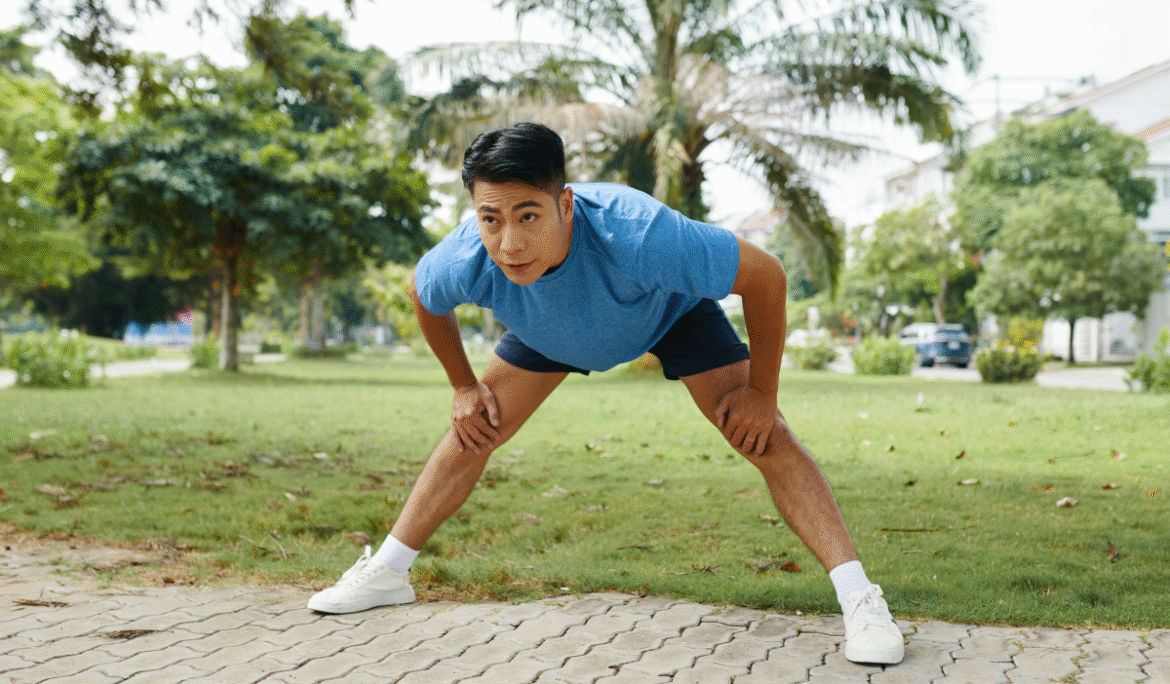Introduction: Why Warming Up Matters in Tennis
Many beginners step straight onto the court, grab a racket, and start hitting balls. While it feels convenient, skipping a proper warm-up often leads to poor performance—and worse, injuries.
At Infinity Racquet Club, we teach juniors and adults that a good tennis warm-up routine is as important as the match itself. Whether you’re a first-time beginner or an aspiring competitor, stretching and warming up prepares your body, sharpens your mind, and protects your muscles.
In this guide, we’ll cover:
-
Step-by-step tennis warm-up exercises.
-
The best tennis stretches for beginners.
-
Pro tips from our coaches in Katy & Fulshear.
-
How warm-ups connect to better performance in camps and matches.
Benefits of a Proper Tennis Warm-Up
-
Injury Prevention – Cold muscles are stiff and prone to strains. Warming up increases blood flow, making them flexible.
-
Improved Movement – Tennis demands quick sprints, lunges, and lateral steps. A good warm-up boosts agility.
-
Better Stroke Timing – Your forehands and serves feel smoother when your muscles are primed.
-
Mental Focus – A warm-up routine signals your brain that it’s game time.
-
Long-Term Performance – Players who warm up consistently build endurance and recover faster.
Step 1: General Warm-Up (5–7 Minutes)
Before touching a racket, start with simple dynamic movements to increase heart rate.
-
Jog Around the Court (2 mins): Light jog forward, backward, and sideways.
-
Jumping Jacks (30 reps): Full-body activation.
-
High Knees (30 secs): Boosts leg drive.
-
Butt Kicks (30 secs): Loosens hamstrings.
-
Skipping (optional, 2 mins): Great cardio warm-up for kids and juniors.
👉 Pro Tip: Keep movements light—this isn’t about exhausting yourself, but gently raising your heart rate.
Step 2: Dynamic Stretching (5 Minutes)
Dynamic stretches prepare muscles for explosive actions in tennis.
Arm & Shoulder Stretches
-
Arm Circles (forward & backward, 15 secs each).
-
Cross-Body Swings (10 reps per side).
-
Overhead Reaches (10 reps).
Lower Body Stretches
-
Walking Lunges (10 steps each leg).
-
Side Lunges (10 reps each side).
-
Leg Swings (forward & sideways, 15 reps per leg).
👉 These stretches mimic tennis movements—so your body feels ready to sprint, rotate, and swing.
Step 3: Tennis-Specific Drills (5–8 Minutes)
Now transition into court-specific warm-ups:
-
Shadow Swings – Practice forehands, backhands, and serves without the ball (10 swings each).
-
Mini Tennis Rally – Start close to the net with a partner, hitting softly to build rhythm.
-
Footwork Ladder (or court lines) – Quick in-and-out steps for 30 seconds.
-
Volley Exchange – Practice volleys with a partner before moving back to baseline.
👉 This step bridges the gap between general warm-up and match play.
Best Stretches After Tennis (Cool-Down)
Equally important as warming up is cooling down after play. Static stretches help muscles recover and reduce soreness.
Upper Body Stretches
-
Shoulder Stretch Across Chest (hold 20 secs each arm).
-
Triceps Stretch (hold 20 secs each arm).
-
Wrist Flexor Stretch (hold 20 secs each hand).
Lower Body Stretches
-
Quadriceps Stretch (hold 20 secs each leg).
-
Hamstring Stretch (hold 20 secs each leg).
-
Calf Stretch (hold 20 secs each leg).
👉 Cooling down also improves flexibility—important for injury prevention long-term.
Warm-Up Mistakes Beginners Make
-
Skipping the Warm-Up Entirely – Biggest cause of early injuries.
-
Static Stretching Before Play – Holding stretches before muscles are warm reduces power output. Save static stretches for after.
-
Doing Too Much Too Soon – Avoid high-intensity sprints at the start; build up gradually.
-
Copying Pro Warm-Ups Blindly – Beginners need simpler routines than professionals.
How Infinity Racquet Club Coaches Teach Warm-Ups
Our certified coaches in Katy & Fulshear always begin lessons with structured warm-ups. For example:
-
Junior Future Champs → Foam ball rallies + agility ladder.
-
Intermediate Groups → Dynamic stretches + footwork cone drills.
-
Camps & Clinics → Group cardio + mini matches to prepare for longer sessions.
👉 Explore Our Tennis Camps – where warm-up routines are part of daily training.
Connection Between Warm-Ups and Fast Improvement
Players often ask: “How can I improve my tennis game fast?”
The answer always includes warm-ups and stretching.
-
Better preparation = sharper strokes.
-
Lower injury risk = more consistent training.
-
More flexibility = greater reach for wide balls.
👉 Read: How to Improve Your Tennis Game Fast for more insights.
Sample 15-Minute Tennis Warm-Up Routine
Here’s a full routine you can copy:
| Time | Activity | Purpose |
|---|---|---|
| 0–2 min | Jogging around court | Increase blood flow |
| 2–4 min | Jumping jacks, high knees, butt kicks | Activate muscles |
| 4–6 min | Arm circles, walking lunges, leg swings | Dynamic stretch |
| 6–10 min | Shadow swings + footwork ladder | Tennis-specific |
| 10–15 min | Mini-rally + volleys | Build rhythm before play |
FAQs
Q1. What is the best tennis warm-up routine for beginners?
A mix of jogging, dynamic stretches, and mini rallies lasting 10–15 minutes.
Q2. Should kids warm up before tennis?
Yes, even juniors need simple warm-ups to avoid injuries and build good habits.
Q3. How long should I stretch after tennis?
Spend at least 5–10 minutes on static stretches post-match.
Q4. Do I need equipment for warm-ups?
Not necessarily, but agility ladders, cones, or resistance bands can help.
Q5. Can skipping warm-ups cause long-term problems?
Yes—consistent skipping can lead to recurring injuries, slower recovery, and reduced performance.
Conclusion: Play Safer, Play Better
A proper tennis warm-up routine isn’t optional—it’s essential. Whether you’re a beginner learning basic strokes or a competitive player in Katy & Fulshear, warming up ensures you move better, hit stronger, and stay injury-free.
At Infinity Racquet Club, we make warm-ups and stretching part of every lesson, camp, and tournament prep. If you’re ready to experience structured training that protects your body and boosts your game, join us today.







